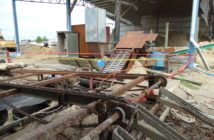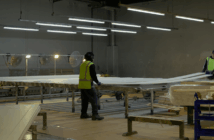Identifying a workplace risk but not following up to ensure it is controlled is bad health and safety business practice according to WorkSafe

The comment follows the sentencing of Agility Building Solutions Limited in the Christchurch District Court after a painter was injured in the construction company’s own workplace.
WorkSafe says the case is a clear example of workplaces not ensuring safety gear is actually safe for use.
The injured painter, brought in as a contractor to complete some work at Agility’s business premises, was given incorrectly installed mobile scaffolding to work from.
On the first day of the job, the painter fell two metres from the scaffolding to the concrete floor below landing head first and sustaining multiple fractures to his skull, face and ribs.
He suffered major brain trauma as a result.
While Agility had identified a fall from the platform as a risk and noted that it needed to be correctly installed, they had no systems in place to ensure that a pre-work check took place to make sure the safety gear was installed correctly and fit for purpose.
WorkSafe’s Head of Specialist Interventions Simon Humphries says “Temporary work platforms, like the mobile scaffolding used in this instance, should be constructed by a competent person and should be suitable for carrying out the work required of it.
“This case is also a reminder of the obligations for those employing subcontractors to complete jobs.
“It is reasonable that the painter expected the safety equipment supplied by Agility Building to be safe and the law required Agility to ensure that it was.”
Following the incident, Agility Building put a pre-start check list for the scaffolding in place that requires manager sign off before it can be used.
It also provided remedial training to all workers on how to assemble the scaffold correctly.
A fine of $150,000 was imposed, reduced from $285,000 for financial reasons and reparation of $42,180.04 was ordered.
Agility Building Solutions Limited was sentenced under sections 36(1)(a), 48(1), and (2)(c) of the Health and Safety at Work Act 2015.
“Being a PCBU, failed to ensure, so far as was reasonably practicable, the health and safety of workers who worked for the PCBU, while at work in the business or undertaking, namely painting, and that failure exposed workers to a risk of death or serious injury, arising from a fall from height.”
The maximum penalty is a fine not exceeding $1,500,000.



